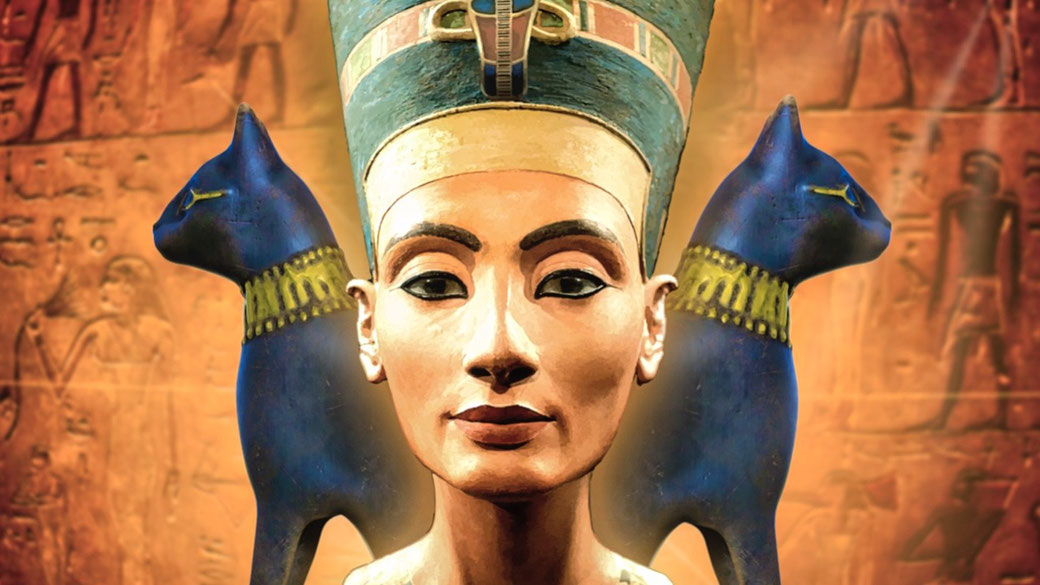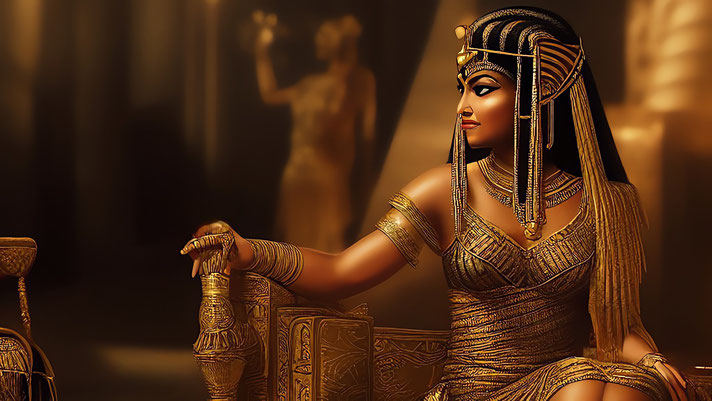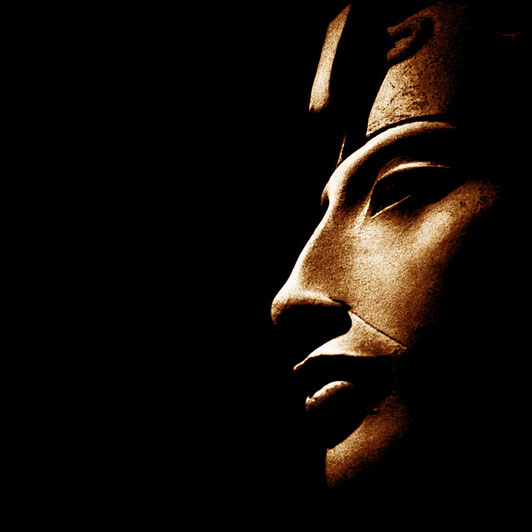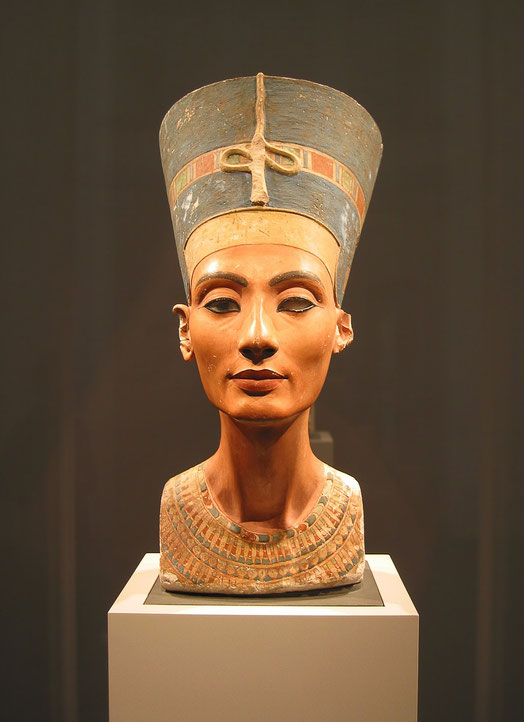The mysterious disappearance of Nefertiti, the most powerful Egyptian queen of her time

Nefertiti, the ancient Egyptian queen, is a figure who has captivated the imaginations of people around the world for centuries.
Her regal beauty, political influence, and involvement in the religious revolution of her time have made her one of the most fascinating and enigmatic figures in Egyptian history.
From the iconic bust that bears her likeness to the mystery surrounding her final years, the story of Nefertiti has captured the attention of historians, artists, and scholars alike.
But who was the real Nefertiti, and why did she suddenly disappear without a trace?
Who was Nefertiti?
Nefertiti was an ancient Egyptian queen and the wife of Pharaoh Akhenaten, who ruled Egypt during the 18th dynasty in the 14th century BCE.
Her name means "the beautiful one has come," which is often cited as a testament to her legendary beauty.
She is widely regarded as one of the most powerful and influential queens in Egyptian history, and her reign marked a significant period of cultural and religious change in ancient Egypt.
Little is known about her early life, as she first appears in historical records when she married Akhenaten, who was then known as Amenhotep IV.
The couple ruled together from around 1353 BCE to 1336 BCE, and during their reign, they implemented a radical new religious and artistic style that emphasized the worship of the sun disk, Aten, as the supreme deity.
Where did she come from?
One of the greatest mysteries about Nefertiti is that we still don't know where she came from. As a result, several theories have been proposed.
One theory suggests that Nefertiti was born in Egypt and came from a noble family. It is possible that her father was a high-ranking official in the court of Amenhotep III, and that she was raised in a royal household.
This theory is supported by the fact that Nefertiti was married to the pharaoh Akhenaten, which would have been unlikely if she was not of noble birth.
Additionally, Nefertiti was depicted in a number of Egyptian reliefs and sculptures as a queen with an elegant headdress, which was a symbol of nobility.

Another theory suggests that Nefertiti was a foreign princess who was married into the royal family.
Some scholars have suggested that she may have come from Mitanni, a kingdom located in modern-day Syria, or from the Hittite empire in Anatolia.
It is also possible that her marriage to Akhenaten was a political alliance between Egypt and a foreign power, which would have been common in ancient times.
A third theory suggests that Nefertiti was not of noble birth, but instead came from a commoner family.
This theory is based on the fact that there is no evidence of her family being prominent prior to her marriage to Akhenaten.
However, it is important to note that the role of women in ancient Egypt was often downplayed in official records, which may have contributed to a lack of information about her family.
Additionally, Nefertiti's rise to power and influence may have been due to her intelligence, diplomatic skills, and artistic sensibility, rather than her birth.
Her central role in Akhenaten's religious revolution
Nefertiti played a significant role in her husband Akhenaten's new religion, which focused on the worship of the sun disk Aten as the supreme deity.
Some experts believe that Nefertiti may have been the primary advocate of the Atenist religion, and that she played a key role in promoting its acceptance among the Egyptian people.
One of the most significant aspects of Nefertiti's role in the Atenist religion was her appearance in numerous depictions of the royal family worshipping the sun disk.
In these images, Nefertiti is often shown standing alongside Akhenaten, offering prayers and performing religious rituals.
These depictions suggest that Nefertiti was an active participant in the new religion and that she played a key role in promoting its acceptance among the Egyptian people.
It is also possible that Nefertiti played a direct role in the development of Atenist theology and philosophy.
Some historians have argued that Nefertiti may have been the inspiration for the Atenist religion, and that she may have helped to shape its beliefs and practices.
Although there is little concrete evidence to support this theory, it is clear that Nefertiti was intimately involved in the promotion and propagation of the new religion, and that her role in its development was significant.

The mystery of Nefertiti's fate
Nefertiti disappears from the historical record after the twelfth year of her husband Akhenaten's reign. The exact reason for her disappearance is unclear, and there are many theories and speculations about what happened to her.
Some scholars have suggested that Nefertiti may have died before her husband, possibly during the early years of his reign.
It is known that Akhenaten had several daughters, and it is possible that one of them succeeded Nefertiti as queen.
However, the exact identity of Akhenaten's successors remains unclear, and there is little concrete evidence to support any particular theory.
Was she the mysterious pharaoh Neferneferuaten?
One of the most debated theories about Nefertiti's disappearance is that she assumed a new identity as Neferneferuaten and ruled alongside her husband Akhenaten as co-regent.
This theory is based on a number of factors, including the fact that many of the monuments and structures attributed to Akhenaten's reign feature the name Neferneferuaten alongside his own.
Some historians believe that Neferneferuaten was not a separate individual, but rather a name adopted by Nefertiti during a period of political or religious upheaval.
This theory suggests that Nefertiti may have assumed the name and title of co-regent in order to secure her position of power and authority during a time of transition in ancient Egypt.
There are also some linguistic and artistic clues that support the idea that Nefertiti and Neferneferuaten may have been the same person.
For example, some inscriptions and images suggest that the two individuals shared a similar facial structure and style of dress, leading some historians to conclude that they may have been one and the same.
Despite these intriguing possibilities, there is still much debate and disagreement among historians about the true identity of Neferneferuaten and the extent of Nefertiti's influence during this period of ancient Egyptian history.
Her modern reputationas a legendary beauty
Nefertiti has become synonymous with beauty in popular culture. This is primarily due to a famous artifact discovered in the early 20th century. It was a bust of Nefertiti herself, showing her face.
Discovered in 1912, this carving has since become one of the most famous and recognizable works of art in the world.
The bust depicts Nefertiti with a long, elegant neck, high cheekbones, and a serene expression that conveys a sense of peace and inner calm.
These features have come to be seen as the epitome of classical beauty and have made Nefertiti an icon of feminine grace and poise.
However, it is worth remembering that any recreation of a royal's face is most likely an idealised representation of the person rather than an accurate record of what they really looked like.

What do you need help with?
Download ready-to-use digital learning resources
Copyright © History Skills 2014-2025.
Contact via email
With the exception of links to external sites, some historical sources and extracts from specific publications, all content on this website is copyrighted by History Skills. This content may not be copied, republished or redistributed without written permission from the website creator. Please use the Contact page to obtain relevant permission.





